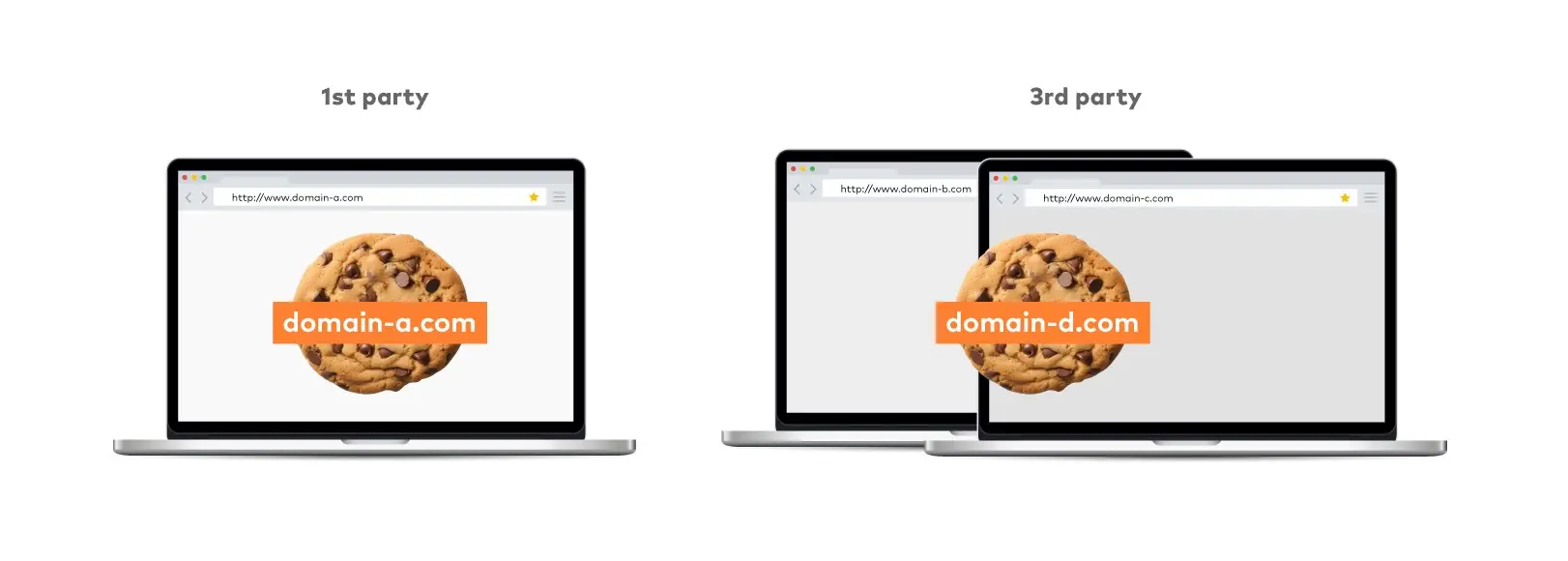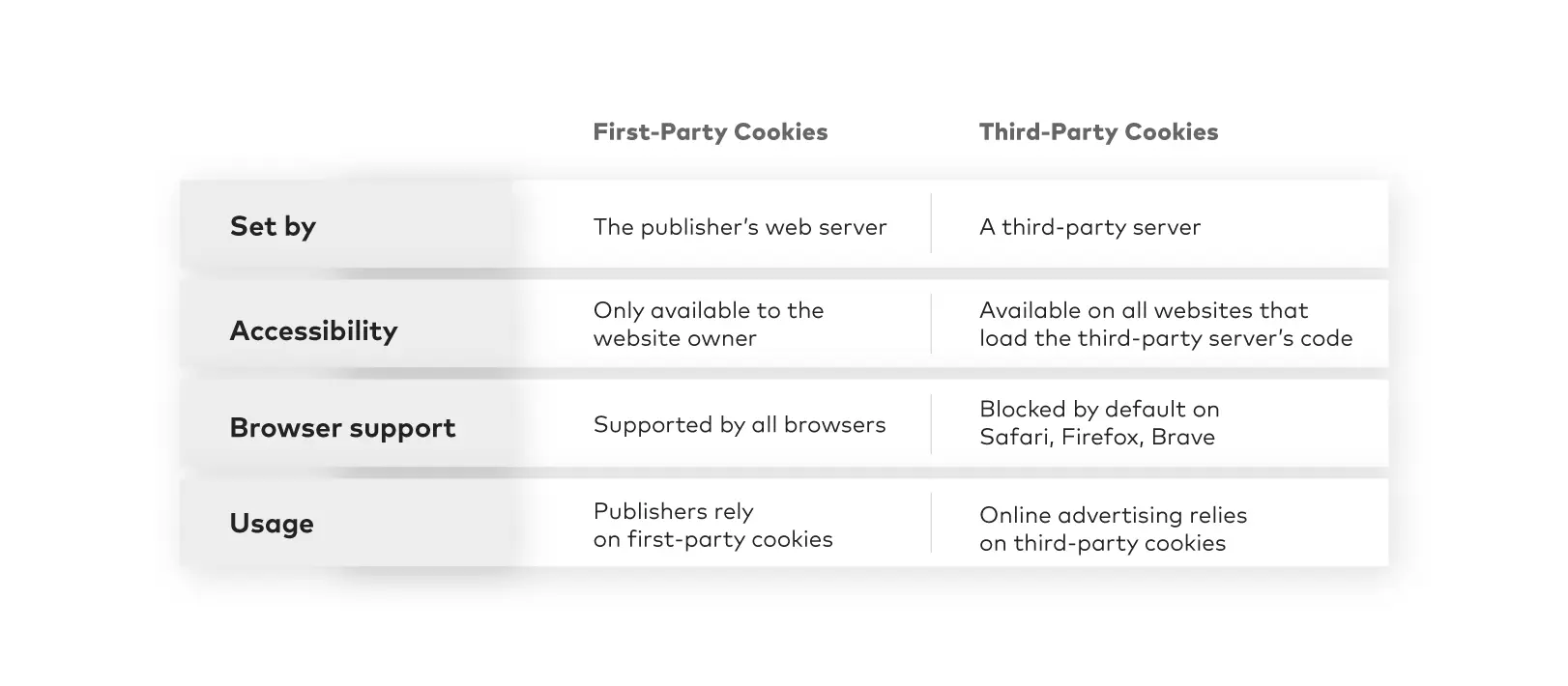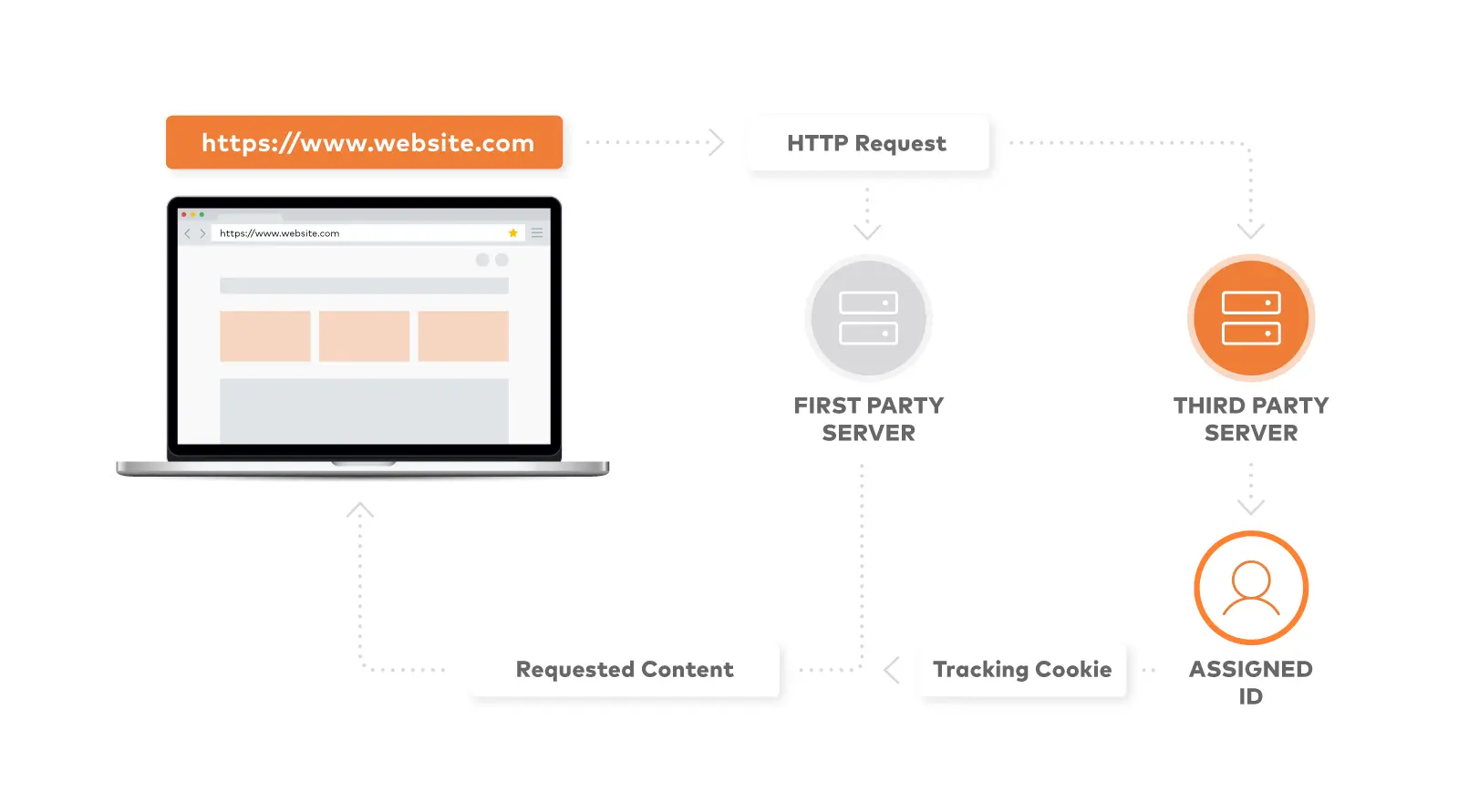Digital marketing without third-party cookies – new rules


2024 is the year when third-party cookies disappear from Google Chrome, which is still the most popular browser with nearly 70% market share according to W3Counter. In today’s article, we take a closer look at third-party cookies, and what their disappearance means for digital marketing.
What are 3rd party cookies?
Cookies in general are small files that are sent by websites and stored in a device’s drive when using the internet. These files contain valuable information – their origin site, data on the browser and device used to connect to the site, and the length of time the file will remain on the user’s device. Cookies make it possible to save user preferences when visiting a website, which means, e.g., we do not have to log in every time. The contents of our shopping basket are also saved thanks to cookies. The most important data from the point of view of a digital marketer pertains to user activity during a single session.
First-party cookies are the ones created directly by the website you visit, while third-party cookies are generated by external sources – the partners of the website, which most commonly refers to advertisers.

Where do you currently use 3rd party cookies?
A third-party cookie makes it possible to display more personalized content, monitor the effectiveness of ads, measure the number of views and clicks, and create user templates based on their behavior, preferences and search history. When we are interested in the purchase of a specific item and when we view a site with this type of product, we can be sure we’ve just initiated a targeted advertising process. We’ll see the ads in our email app, social media and on many different websites. Third-party cookies make retargeting and cross-site targeting possible.

When will 3rd party cookies be gone?
Safari, Firefox and Edge have already blocked third-party cookies. The biggest change will, of course, come when Google begins blocking third-party cookies in Chrome. The process is supposed to begin in Q1 2024 with just 1% of Chrome users. Once the process is initiated, the company will be testing the results, intending to eliminate third-party cookies for all users by Q3 2024.
How to prepare your marketing department for a world without 3rd party cookies?
You should focus on acquiring information directly from the user. The whole point of excluding cookies is related to privacy protection and empowering users to make informed decisions about tracking and the information they want to share. This will increase the importance of zero-party data, so the information the user is willing to share with individual brands. How to acquire this critical information? Use owned media – your website, blog, social media profiles, emails, any kind of content your brand generates and shares through its own communication channels. Surveys, newsletter registration forms and quizzes are effective ways of getting to know your audiences. Brand recognition initiatives will become increasingly important alongside high-quality content. Companies will have to learn to organize their marketing efforts based on less accurate data, as users will have the possibility to hide their activity.
Mobile apps and social media interactions will become more important as they do not use cookies for tracking user activity.
As with most fundamental changes in technology, the environment will probably adapt – and rather quickly, so we might expect new ways of acquiring critical marketing data in the near future.
How to advertise yourself in a world without cookies?
Let’s have a look at some of the more specific resources available to digital marketing specialists once third-party cookies become unavailable.
1st party ID
First-party IDs, or first-party cookies, are small pieces of data stored directly on the user’s device by the website being visited. Unlike third-party cookies that are placed by other websites or online services for tracking and advertising, first-party IDs are directly generated and used by the site that the user is currently browsing. Thanks to first-party cookies, online stores can propose products similar to the ones the user browsed or added to the shopping basket. This cookie type can be deleted by clearing browser history, which makes it less controversial than third-party cookies.
Content marketing
High-quality content allows brands to create trust and engagement organically, providing valuable information and insights to audiences. As personalized ad targeting becomes more challenging, delivering compelling content can effectively attract and retain audiences. Interactive content, such as whitepapers, webinars, quizzes or gated content, encourages visitors to willingly share their information, creating a first-party data source for marketers. This is a more privacy-compliant strategy that also aids in building trust and meaningful relationships. Content marketing is critical in optimizing search engine rankings. By building a repository of educational, entertaining, or insightful content around relevant keywords, businesses can attract organic traffic and improve their positions in Google’s search engine results pages. SEO will become more important than ever.
Contextual targeting
Contextual targeting in digital marketing refers to the practice of displaying ads to users based on the content of the webpage they are currently viewing. Rather than relying on a user’s past behavior or browsing history (as is the case with behavioral targeting), contextual targeting focuses on the relevance of the ad to the content on the page. If a user is reading a blog post about home gardening, they may see ads for gardening tools or plant seeds, as these ads are contextually relevant to the content of the webpage. The process works by using automated systems to understand the content and context of a webpage, then matching and displaying appropriate ads. Keywords, subject matter, and the overall context of the page are considered to ensure that the ad aligns with the content.
Walled gardens
In dgital marketing, the term “walled gardens” refers to platforms or ecosystems where the provider has full control of operations, including the content and applications that are allowed. These platforms limit the information and data that can be transferred in and out to maintain control over the user experience and data within their own ‘walls’.
Prominent examples of “walled gardens” include major tech platforms like Google, Facebook, and Amazon. These companies offer a variety of services and control the flow of information within their ecosystems, often restricting third-party integrations or data access. Using such closed ecosystems for marketing purposes will be even more critical after blocking third-party cookies.
Cookies 2024: changes in eCommerce
The elimination of third-party cookies is expected to significantly impact eCommerce businesses, which have relied heavily on this tracking mechanism for advertising, marketing, and understanding user behavior. So far, third-party cookies have been used to generate personalized recommendations and to target advertisements based on a user’s browsing history. With this massive change in the digital landscape, it will be imperative to focus on other means of collecting information on user preferences and online behavior – and the sooner the better.
Conclusion
The phasing out of third-party cookies marks a significant turning point in digital marketing. Investments in first-party data, content marketing, contextual targeting, and collaborative data-sharing models are becoming increasingly critical. Similar to other technological shifts, the recipe for success lies in adaptability. Our strategies must evolve with the landscape, with an increased focus on respecting user privacy and delivering value to garner trust and loyalty. While third-party cookies have long facilitated personalized user experiences, their disappearance reminds us that they are not the only tools in our arsenal and new tools are bound to appear in the near future.
If you found informative value in this article and would like to know more, you may want to look at our article about analytics.



















